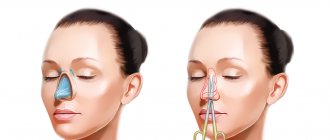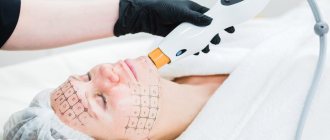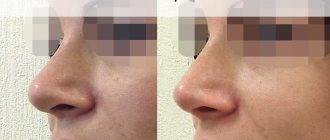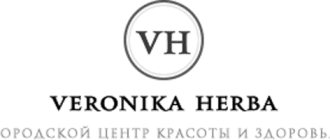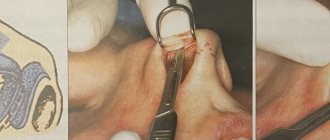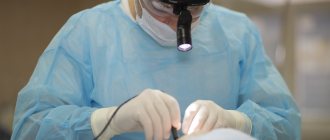The doctor examines the patient, takes a photo of the nose and listens to expectations from plastic surgery - what shape of the nose would like to be achieved, what to remove.
Computer modeling allows you to visualize the result of the operation in advance and discuss it with the patient. If the patient is satisfied with everything, the doctor tells how to prepare for rhinoplasty, gives directions for tests and hardware diagnostics.
The doctor must be informed about existing chronic diseases, bad habits, allergic reactions, intolerance to any drugs and local anesthesia.
What tests need to be done before rhinoplasty?
The main requirement for rhinoplasty is to identify the general state of health and possible contraindications. To do this, the patient must take tests and undergo examinations:
- General blood analysis.
- Biochemical blood test (total protein, ALT, AST, total bilirubin, creatinine, urea, glucose, electrolytes).
- General urine analysis.
- Analysis for blood group and Rh factor.
- Blood test for HIV, syphilis and hepatitis B and C (HBsAg, HCV).
- Blood test for coagulogram.
- ECG.
- Fluorography.
The therapist gives a conclusion about readiness for surgery. If there are concomitant diseases, then consultation with a specialized specialist will be required. To prepare for anesthesia, you will need to visit an anesthesiologist.
Possible complications
The slightest touch to the nose can cause deformation of the nose, and the operation will need to be repeated. Touching the bridge of your nose, putting on glasses and moving your facial muscles is extremely dangerous. But an even more difficult problem will be the appearance of a runny nose, which will clog your breathing. The influence of smoking in this case is also obvious. After all, a smoker has a lowered immune system, and his body is unable to cope with even a mild illness.
And the slightest incorrect tilt of the head or muscle movements can change the shape of the nose. The smoker takes deep breaths and exhales. It is not difficult to imagine how a swollen face will strain in this case.
Surgeons often hear the question, is it possible to smoke after rhinoplasty? And even having received a clearly negative answer, patients think that the problem is artificially inflated and “little by little” is still possible. However, after the operation, the realization comes that the postoperative period is more difficult than even the operation itself. Aching pain and the required precision in daily movements often lead to stress. And if during this period a person himself acts as an enemy to his health, then the most detrimental consequences can be expected:
- tissue necrosis;
- thrombosis;
- heavy bleeding;
- changes in drug metabolism during anesthesia;
- deterioration of blood clotting, and as a result – problematic healing of sutures;
- leveling the results of the operation.
Recommendations after rhinoplasty of the nose
What to expect immediately after surgery?
In the early rehabilitation period, patients feel discomfort due to the inability to breathe through the nose, since turundas are placed in it. Under no circumstances should you remove them yourself or even move them, as this can lead to unpredictable complications.
In the first days, bruises, swelling, and pain persist, which can be relieved with an analgesic.
For several days you need to sleep on your back, on a high pillow.
How is the rehabilitation going? When can you go to work?
The next day, the turundas are usually removed and the nasal cavities are cleaned. However, breathing will still be difficult due to the swelling. On days 4-5, the fixing bandage is changed and a follow-up examination is carried out. After 10-11 days, the bandage is removed and the primary result is assessed. Full recovery may take up to one year. This is an individual parameter; some patients recover completely in 3-4 months.
After about 3 weeks, the severity of edema and hematomas decreases. And you can gradually return to your normal life, including going to work, if it does not involve heavy physical activity.
Choose what you want to fix
- Deviated nasal septum
- Congenital deformity of the nose
- Post-traumatic nasal deformity
- Poor quality result of previous rhinoplasty
- Large nostrils
- Hump of nose
- Excessive nose length
- Columella correction
- Augmentation rhinoplasty
- Nose shape correction
- Pointed or thickened tip of the nose
Deviated nasal septum
If you have a deviated septum, then it is not rhinoplasty that is necessary, but septoplasty. “Septo-” translated as “septum”, the name speaks for itself - septum plastic surgery. This operation is more complex and rehabilitation is aimed at restoring respiratory function. In the world they practice combining septoplasty and rhinoplasty into one operation, thanks to which you can not only improve breathing, but also the appearance of the nose.
Sometimes a deviated nasal septum can cause chronic shortness of breath syndrome, and as a result, frequent headaches and chronic fatigue, impaired concentration and performance. In such cases, surgery can restore the body's oxygen supply by restoring airway patency.
At Dr. Ignatiev’s Clinic, plastic surgeons can perform septoplasty in combination with rhinoplasty.
Congenital deformity of the nose
Surgery to correct the shape of the nose due to a congenital defect. The duration of the operation depends on the defect. Anesthesia - general. When should you bring your child to have a congenital deformity corrected? It is important to bring your child to the surgeon for examination as early as possible in order to determine treatment tactics. In adults, nasal reconstruction can be one-stage, two-stage, or multi-stage. It depends on the complexity of the case. At the Clinic of Dr. Ignatiev, plastic surgeons perform reconstructive operations on the nose for congenital defects.
Post-traumatic nasal deformity
The most common injury to the nose is a fracture. To reconstruct such an injury, one operation is enough - the bone is immobilized at the site of the old fracture, the bone is restored and given a new shape. If necessary, grafts can be used - cartilage from the ear or rib. For more details, you can consult with the plastic surgeons of the Doctor Ignatiev Clinic.
Poor quality result of previous rhinoplasty
In nasal plastic surgery, revision reconstruction is considered the most complex type of surgery. Why? Scar tissue is more difficult to operate on. It is not known what happened during the first operation - the anatomy was disturbed. Important nasal structures may be removed and will have to be reconstructed with grafts. The duration of such an operation is always higher than the primary operation. But it's possible! Even the most difficult cases can be corrected. Contact us by phone +380679204647
Nostril rhinoplasty
Changing the shape of the nose with very long wings (or too wide), adding cartilage tissue to the nasal wings. The operation is performed under general anesthesia. Duration – about two hours. The marks from the stitches disappear after six weeks, during which time you need to protect your nose from exposure to UV rays and your body from stress. The shape of the nostrils can be completely adjusted!
Hump of nose
The hump can only be eliminated surgically once and for all! To do this, a special tool is used that removes the hump and then polishes the bridge of the nose to achieve smooth transitions.
Excessive nose length
To reduce the length of the nose, plastic techniques are mainly used on the cartilaginous part of the nose, which makes rehabilitation easier and the result more predictable. This surgery can be performed under local anesthesia and you can return to work the same day. A plaster cast is used only on the tip of the nose for 3 days, and tampons are not used at all.
Correction of the columella (lower part between the nostril bridge)
To enlarge the columella, a section of cartilage tissue is transplanted; to reduce it, the lower parts of the nasal wings are excised. The operation is performed under general anesthesia and lasts about forty minutes. The hospital stay after surgery is three days. During the first five to eight weeks, tissue swelling is possible.
Augmentation rhinoplasty
Surgical lifting of the bridge of the nose for flattened nose. Surgery to enlarge a short or small nose. For the frame, bones and cartilage from other parts of the patient’s body are used, rarely - synthetic material
Nose shape correction
The operation involves dissection of the skin in the lower part of the nostrils using a closed or open method and plastic surgery of the cartilaginous and bone parts of the nose. The scars are invisible.
Plastic surgery of the tip of the nose
When only the tip of the nose is changed, the operation does not take much time, and recovery takes place in a short time.
Stereotypes about plastic surgery performed in the summer
1. “Hot weather worsens the results.”
This is not true. Suffice it to remember that almost the largest percentage of plastic surgeries in the world is performed in Brazil. Moreover, it is precisely in large cities located in a tropical climate, where there is no cold time of the year at all. The same can be said about the southwestern cities of the United States - San Francisco and Los Angeles. The success of plastic surgery performed there in the summer, in the very heat, is no lower than the success of operations performed in the winter in the cold Scandinavian countries of Europe.
In addition, at SM-Plastika, surgical interventions take place in the operating room, where the set air temperature is constantly maintained. And after the operation, the patient is moved to an air-conditioned room.
2. “Surgical wounds take a long time to heal in summer.”
This statement is also untrue. Moreover, one of the standard healing stimuli is dry and warm air. A number of studies have been conducted around the world, the results of which have convincingly demonstrated that the closure of skin lesions and scar formation occurs much faster in the summer. The reason for this is that warm ambient air improves capillary blood flow, which means much more oxygen and nutrients reach the skin. This speeds up metabolic processes, stimulates collagen production and, ultimately, leads to faster healing.
3. “General rehabilitation lasts longer in the summer.”
Quite the opposite. The sun's rays help us produce a number of vitamins, and moderate insolation has a beneficial effect on the immune system. But at cold temperatures, all metabolic processes in the body slow down.
4. “After plastic surgery, you should not sunbathe in the summer.”
Yes, on the one hand this is true. But you can’t sunbathe after surgery (whether under the sun or in a solarium) in any other season. And in terms of radiation intensity, the winter sun is often no less aggressive than the summer sun. Accordingly, sunscreen should always be used.
5. “It’s harder to wear compression garments in hot weather.”
Fair statement. If you undergo breast augmentation in the summer, for example, you will have to wear compression garments constantly for the first time. And, of course, it will be hot in it. However, coping with this problem is not difficult - you just need to be more careful than usual about your hygiene.
6. “In summer, the risk of infectious complications is higher.”
Yes, in a warm atmosphere, pathogenic microorganisms multiply much faster and can cause infection of a postoperative wound. But preventing this infection is one of the most important goals for SM-Plastic surgeons. Compliance with their recommendations, timely attendance at dressing procedures and preventive drug therapy reduce the risk of such infections to a minimum.
7. “The risk of vascular problems is higher in summer.”
This is perhaps the only statement that can be considered unconditionally true. Summer is a rather difficult period for those who have concomitant diseases of the cardiovascular system and excess weight. In the heat, the likelihood of pressure surges up to hypertensive crises increases. Therefore, for patients with arterial hypertension and heart failure, SM-Plastic doctors really recommend postponing surgical interventions until autumn or winter.
Necrosis
This term is used to refer to the process of tissue death. It may be provoked by:
- infectious diseases;
- lack of supply of nutrients through the blood to certain parts of the body.
In the last paragraph, one of the most significant factors should be highlighted - reduced immunity due to the influence of nicotine. It constricts blood vessels. Vasospasm increases blood pressure and leads to deterioration of blood microcirculation to tissues. Oxygen does not enter the cells of smokers. And in a postoperative state of stress, the body is not able to activate internal reserves. As a result, instead of a perfect nose, a person will receive blackened areas that will have to be removed surgically, sutures, etc. Necrotic masses grow quickly and, in the absence of adequate treatment, can lead to death.
Therefore, if you decide to change your appearance, you should start with your attitude towards your own health. If a person smokes almost all his life, then it is quite difficult for him to give up this habit. According to psychologists, the main thing is to hold out for 21 days. During this period, the smoker will feel “withdrawal” and anger (the effects of nicotine on the nervous system are known). To mitigate the effects of withdrawal, some use nicotine patches, others use e-cigarettes. However, there are no safe ways to smoke. And it is important that before the operation there is no nicotine in the body at all.
Just be careful
According to statistics, the most common injuries after rhinoplasty are banal jambs of doorways and blows from small children. So it is very important to be careful when turning (especially inside the house) and when playing with your child.
There are also frequent cases of damage to the nose during sleep - try to control this. Moreover, this applies not only to your own movements during sleep, but also to your spouse.
Infections
A long healing period carries the risk of infection. The stitches are protected only by a gauze bandage. Microbes can penetrate through it and provoke the development of various complications. The older the patient, the slower the tissues grow together. And the additional negative impact of smoking will aggravate both the tightening of the sutures and the leveling of complications caused by smoking.
Smokers suffer from bronchitis and other respiratory tract diseases by a third more than those who give up this habit. And according to statistics, the frequency of complications of various types in the postoperative period is 10% higher.
